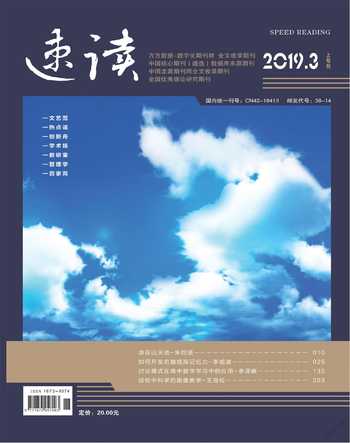On Equivalency in English Idiom Translation
Abstract:The paper focuses on Chinese-English idioms translation that based on equivalency principle and introduces some methods including literal translation,free translation,annotated translation and borrowing translation.
Key words:the principle of equivalency;idiom translation;translation methods
1 Introduction
Idioms are the most special part with strong ethnic characteristics.So when translating the idioms,translators should focus on these two different languages and cultures and realize equivalency between source and target language.The purpose of equivalent theory is to make sure the meanings of source and target language are similar and readers from different countries have same feelings after read two versions.
2 The differences between Chinese idioms and English idioms
Idiom has a close relationship with culture.Some idioms come from people’s life,customs and geographical environment,others come from religious relief,history,allegory and mythological stories.
2.1 The different living and geographical environment
The origins of idioms are closely related with human’s living and geographical environment.UK is an island country,when a British people express that people spend money lavishly,they usually say “spending money like water”.In China,land is very important for Chinese people,so we may say挥土如金。
2.2 The different custom
There are many differences between English and Chinese customs.For example,in western countries,white is the symbol of pure,there are some idioms: Days marked with a white stone; Lay a white lie.But in Chinese,white means miserable and horrible,such as 白色恐怖,白日見鬼。
2.3 The different religious belief
There are lots of idioms derived from religious belief.Most people embrace Christianity in western countries,so there are some relative idioms: God bless you,God helps those help themselves.While Buddhism has a long history in China and many people believe in it.So there comes idioms like: 不看僧面看佛面、临时抱佛脚。
3 Idioms translation based on equivalent theory
Many translation theorists have put forward different views on translation standards,but they all try to make the target language more accuracy.So idioms translation should follow the principle of unity in form and content and be faithful to the source language.
3.1 Literal translation
Literal translation refers to a translation method without any modification in the original form and meaning.It can keep the figurative image,language styles and ethnic flavor,such as: 竹篮打水一场空(draw water in a bamboo basket),条条大路通罗马(all roads lead to Rome).
3.2 Annotated translation
Annotated translation is used when the idioms have allusion.It could make readers more clear about the target language.For example,meet one’s Waterloo,can be translated into Chinese as“遭遇了滑铁卢──遇到了人生中最大的挫折”; “ 三个臭皮匠,胜过诸葛亮”can be translated as “the wit of three cobblers combined surpasses Zhu Geliang,the master mind”.
3.3 Free translation
Free translation is used when literal translation cannot convey the real meaning.Translators should grasp the figurative meaning of the original text and express the real meaning of author.For instance,“when in Rome,do as Romans do”,it will make people confused if it be translated into “在羅马的时候就要像罗马人一样做事” instead of “入乡随俗”。 One Chinese idiom called水落石出,it should be translated into “truth will prevail in the end” rather than “the stone will appear when the water is low”.
3.4 Borrowing translation
When literal translation does not work,translator can use the Chinese and English idioms that have same or similar metaphorical meaning to express the source language.There are many idioms in English and Chinese which are similar in content and form.For instance,“great men are not always wise” cam be translated into Chinese as“智者千虑,必有一失”;礼多人不怪,courtesy costs nothing.
4 Conclusion
Idioms translation involves all aspects of cultures.Translators should analysis the connotations and choose the appropriate and effective translation strategies based on the specific situation to realize the pragmatic equivalency which needs a large number of translation practice.
References
[1]Nida,E.A.Toward a Science of Translation[M].上海外语教育出版社,2004.
[2]Peter Newmark.Approaches to Translation[M].上海外语教育出版社,2001.
[3]张浩.等效翻译理论与习语翻译初探[J].湖北工程学院学报,2007(s1),52-54.
[4]王国桥.谈英汉习语翻译中语用等效的实现[J].中国电力教育,2007(5),152-154.
作者简介
王艳宇(1994—),女,硕士研究生,上海海事大学,笔译理论与实践。

